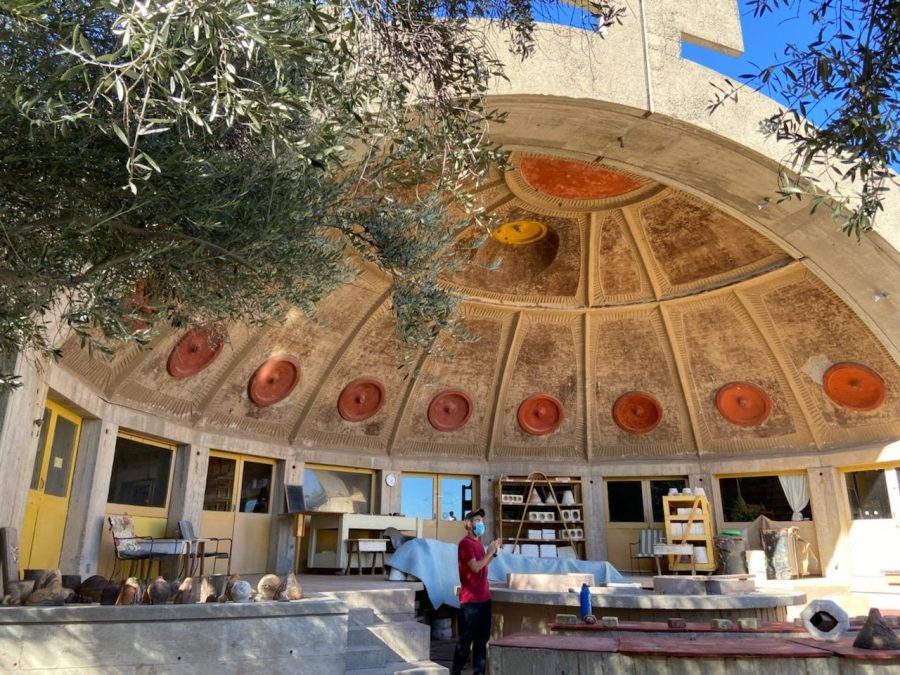The Story of Arcosanti
Arcosanti’s Apse building.
March 29, 2021
Seventy miles north of Phoenix lies a community with only 65 residents. The captivating architecture of the community surrounded by fig and olive trees resembles that of a science fiction novel. This place is called Arcosanti.
According to the Arcosanti website, Arcosanti was founded in 1970 by Italian architect and student of Frank Lloyd Wright Paolo Soleri. The name Arcosanti comes from two Italian words meaning “against things”. These words really capture the goals of the community. In the 1970s, the environmental movement was gaining traction and in many ways this influenced Soleri’s vision for Arcosanti. Unlike a common city which tends to be overcrowded, harmful to the environment, and require a need for extensive transportation, he wanted to create an urban laboratory. His vision was for a compact city fitting 5,000 people that would use sustainable architecture with a low impact to the environment. Work began on the city by workshop volunteers, eventually creating the beautiful architecture that can be observed there today.
A great example of the use of arcology (a combination of architecture and ecology) in Arcosanti is a building known as the Apse where bells are made for the compound to sell in its gift shop. The word “apse” means one quarter of a sphere, and to no surprise that is the same shape of the building. According to Wes Ozeir in an interview with Fair Companies, the Apse faces the south intentionally so that in winter months when the sun is low in the sky it will absorb the sunlight and heat up the concrete. The heat will also radiate out of the concrete and stay in the Apse despite wind because of its unique shape; this is known as a micro environment. The Apse is also covered in soil, so when the summer months come and the sun is above the Apse, it will remain cool. The building also has silt plates on the outside. Silt is a fine sand made from running water that the people of Arcosanti take from the river that flows through their 4,400 acres of land.
One of the main sources of income for the laboratory is its bell making. They make two kinds of bells: silt casted bells and copper bells. They have also managed to monetize Arcosanti’s unique situation. They have daily tours costing anywhere from $12 to $30, a photography workshop, nature hikes, camping opportunities and three airbnbs. To learn more about these opportunities, head to the Arcosanti website. It is certainly commendable how well they have been able to make an income and last over 50 years.
However, in those 50 years a lot has changed for Arcosanti. The original goals of the community have not been met. Arcosanti isn’t legally a city; the largest number of people to live there at once has only been about 150, and it still relies heavily on outside sources to maintain its food supplies and electricity. A lot of Arcosanti’s vision came from Paolo Soleri and in 2017 when Soleri’s history of sexual assault came to light, it’s possible that the community’s residents were content with a less ambitious goal. Although the city still works to become more self-sustaining, not much population growth has been achieved.
Douglas David said, in an article from Newsweek, published in 1976 “As urban architecture, Arcosanti is probably the most important experiment undertaken in our lifetime.” Even though this statement is very subjective, as climate change becomes a more dire issue everyday it is important that new ways of living are developed. If anything should be taken from Arcosanti it should be a passion to think differently and create.










